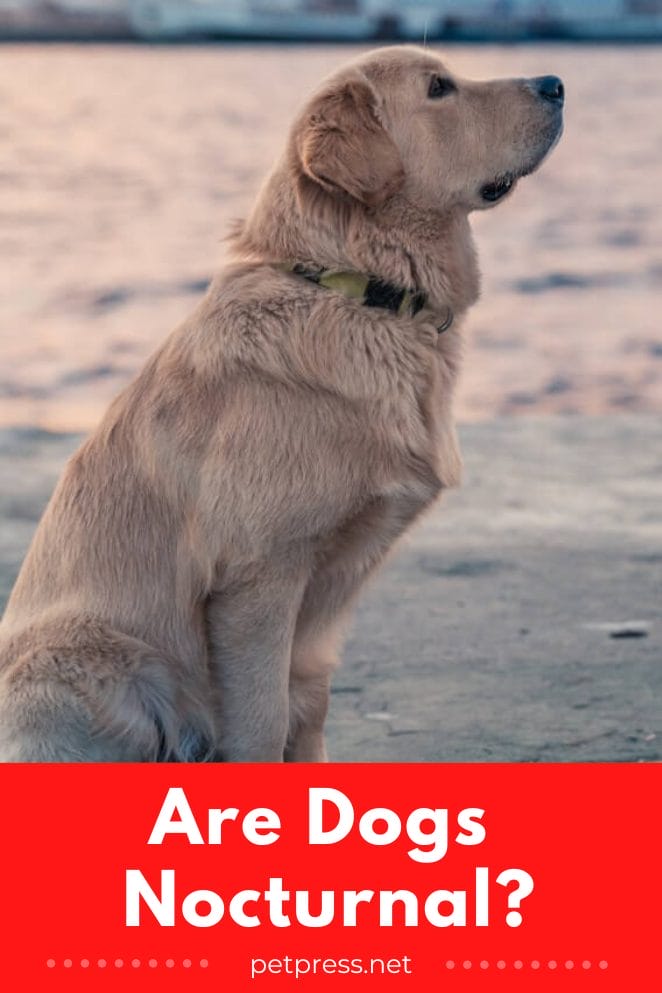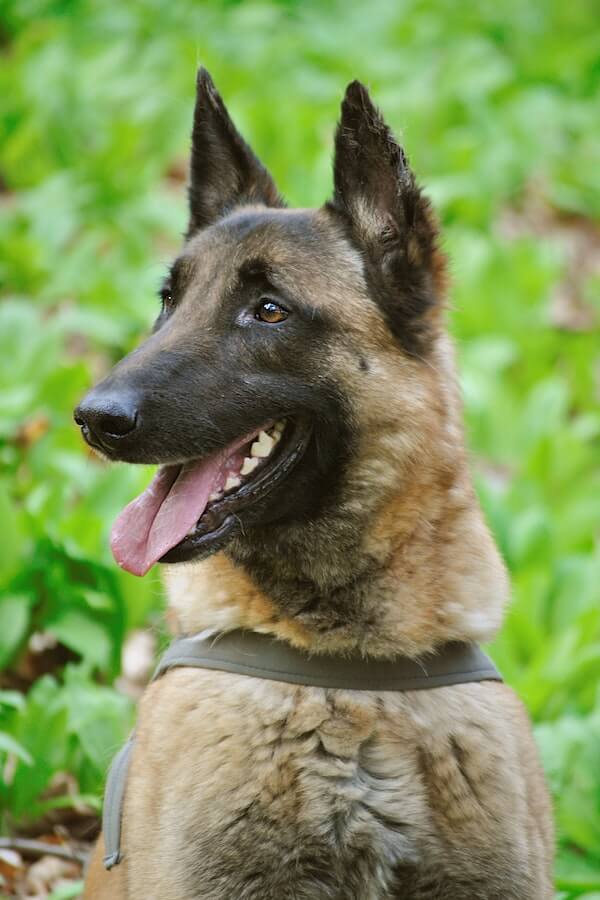
Most of us have heard that dogs stay awake after dawn, often barking and howling in the middle of the night. But are dogs nocturnal?
It’s a common misconception that canines are naturally night owls, but research suggests otherwise.
Let’s dig into the science behind these furry creatures to see what we can discover.
Are dogs nocturnal
Contrary to popular belief, dogs are not nocturnal animals. In fact, they have a sleep cycle that closely resembles humans and other non-nocturnal animals.
The truth is, dogs are actually crepuscular creatures, meaning they are most active at twilight.
It is believed that this behavior has evolved because of their wild ancestor’s need to hunt small prey during the low light periods of dawn and dusk.
Scientifically speaking, dogs have a circadian rhythm – an internal clock that regulates the sleep/wake cycle in response to changes in daylight.
This is why you may notice your pup getting antsy once night falls or sleeping extra soundly when the sun rises.
Dogs are also more sensitive to light than humans, making them more prone to staying active longer in the evening and sleeping in later in the morning.
Dogs may not be nocturnal, but they are equipped with specialized senses that help them navigate the night.
For instance, canines have enhanced night vision thanks to their larger pupils and greater concentration of rod cells in the retina.
They also have a heightened sense of hearing and smell, which helps them detect potential predators in low-light conditions.
So while dogs may not be nocturnal, they definitely still have some night-time habits that you can’t ignore.
So if your pup ever seems to be wide awake when the moon is out, now you know why!
What is the sleeping routine for dogs?

Dogs need a good night’s sleep just like humans, although their natural sleeping routine is a bit different.
Dogs are generally considered to be crepuscular, meaning that they are most active during the dawn and dusk hours of the day.
This means that your dog may not be as interested in slumbering during the traditional hours for humans – between 10 pm and 6 am – but rather prefer to snooze when you’re away at work or out running errands.
In fact, dogs tend to take several naps throughout the day, with those naps ranging from 30 minutes to two hours in length.
During these periods of rest, dogs enter a stage of deep sleep known as slow-wave sleep (SWS).
Their brains produce slower, rhythmic brain waves during this period, associated with relaxation and rest.
Since dogs tend to enter SWS more easily than humans do, this explains why they can take so many shorter naps throughout the day instead of one long session at night.
However, it’s important to keep in mind that your dog’s sleeping routine will vary depending on its age and activity level.
For example, puppies may need up to 18-20 hours of sleep per day as they grow and develop. While older dogs may require less due to reduced energy levels.
Additionally, active breeds like sporting or working dogs may need less sleep since they tend to expend a lot more energy during the day compared to couch potato pups.
Ultimately, the best way to ensure your dog is getting enough rest and relaxation is to stick as closely as possible to their natural sleeping routine. Find out what times of day are best for them to nap and make sure you can provide that schedule on a consistent basis.
With that said, there’s nothing wrong with letting them get some extra shut-eye in between activities or trips outdoors. After all, we could all use an extra snooze now and then!
What dog breeds are nocturnal?

Nocturnal dog breeds are those that tend to be most active at night.
While all dogs have different sleeping patterns, some breeds are adapted to being more active in the dark. Here are five of the most nocturnal dog breeds and why:
1. Greyhounds:
Greyhounds are known for their speed, but they’re also renowned for their nocturnal behavior. This is because greyhounds have evolved over time to become hunters of small game-like rabbits and hares, which come out at night.
2. Border Collie:
Border Collies are a herding breed and their nocturnal behavior is believed to be an adaptation from their ancestors. They were bred in Scotland to herd sheep.
3. Dachshunds:
These playful pups may be small in stature, but they pack quite a personality! Dachshunds were bred to hunt badgers and other burrowing animals, which means they have adapted well to hunting at night.
4. German Shepherds:
This intelligent and loyal breed is one of the most popular dog breeds around the world. German shepherds are natural guardians and protectors. This makes them great choices for those who want a nocturnal companion that can double as an alarm system!
5. Tibetan Mastiffs:
This large and imposing breed is known for its strong protective instincts. They were originally bred to protect livestock from predators. This meant they had to be alert at all times of the day, including nighttime.
The Final Verdict

In conclusion, nocturnal behavior in dogs can vary greatly depending on the breed and individual.
While some dog breeds do tend to be more active at night, most domesticated pups will sleep through the night and remain active during the day.
One can describe dogs as crepuscular creatures. They are most active at dawn and dusk.
So while it’s true that dogs weren’t born to be night owls like their wild ancestors, they can still make great bedtime buddies!
Is your dog more active during the day or night? Let us know in the comment section.


GIPHY App Key not set. Please check settings